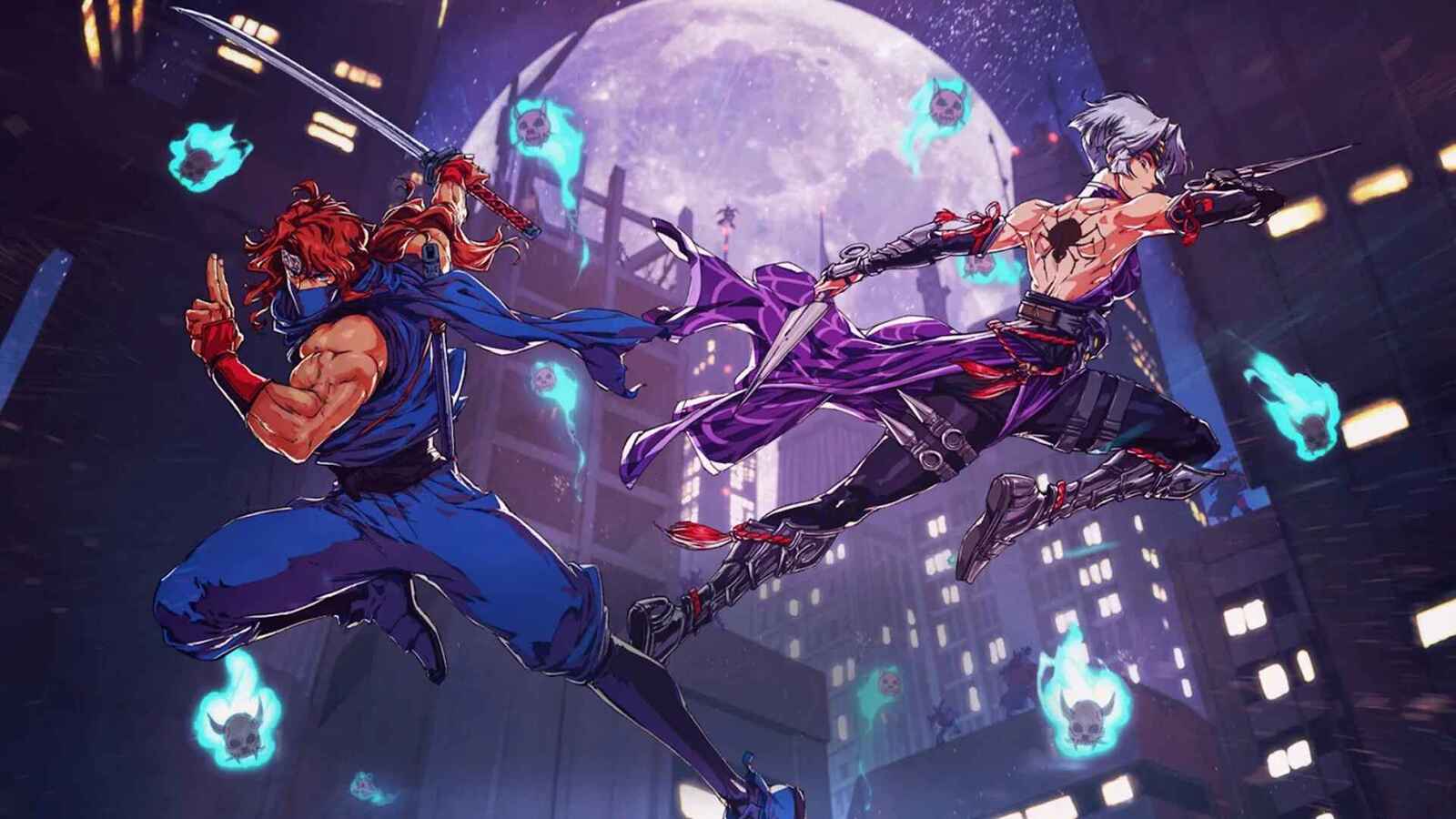At some point in the late 2000s I made playing hard games part of my identity. Reading articles about the reboot of Ninja Gaiden on the original Xbox and how so many people couldn’t even get past the first boss just grabbed my imagination with the thought of “but what if I could?” And so I did, and I kept doing it through multiple Ninja Gaidens, Devil May Crys, Bayonettas, and all sorts of flavors of Dark Souls. As such I’m not really the most unbiased when it comes to talking about hard games, and on top of that everyone has talked TO DEATH about Silksong already and how unfairly hard it is. But I just finished it, got the true ending, and beat all but three bosses (still counted as 100% completion, don’t ask me why) so I want to talk about it too!
Hollow Knight wasn’t a game that I disliked but it never felt like a game I ever needed to go back to when I was done. And by “done” I mean “got the normal ending because I was too terrible at platforming and bullet hells to get the true ending.” As such I was somewhat late getting on the Silksong hype train and so missed out on the years of shitposting and community insanity leading up to its release. Immediately after its release I was warned off playing the game entirely by friends who knew my “god I can’t play platformers well” attitude, but by that point I was three hours in and committed per the laws of the Steam return policy, so there we were and 79 hours later here we are. If you’ve been living under a rock Silksong was intended to be a DLC expansion to Hollow Knight thanks to Kickstarter stretch goals, but allegedly the game continued to grow and grow as the developers added more and more to the world so they eventually decided to make it a standalone game.
For my money something that can make a sequel game either great or annoying is how much they expect their players to just immediately pick up from the end of the last title. Games like Batman Arkham City or Ninja Gaiden 2 handle this in a good way by having some core upgrades from the previous title immediately available, which is great for returning players of all experience levels. People who played the previous game once might vaguely remember having a certain move be a key part of their repertoire, while hardcore fans will want to see enhancements to the game beyond just unlocking the same moves again. Then there are games like Crash Bandicoot 4: It’s About Time where they just have the difficulty from the last game’s final levels as the starting point for the sequel and only get harder from there. This is the wrong way to go about making a sequel and is unfortunately somewhat of the avenue Silksong seems to have taken in its design. There have since been a patch tuning down the difficulty in the early areas but day one players are probably still traumatized by every enemy dealing twice the damage the foes from the start of Hollow Knight did, not to mention a less generous healing system, a harder to execute aerial attack (arguably the cornerstone of Hollow Knight‘s entire combat and platforming system), and an economy that is stringy at best.
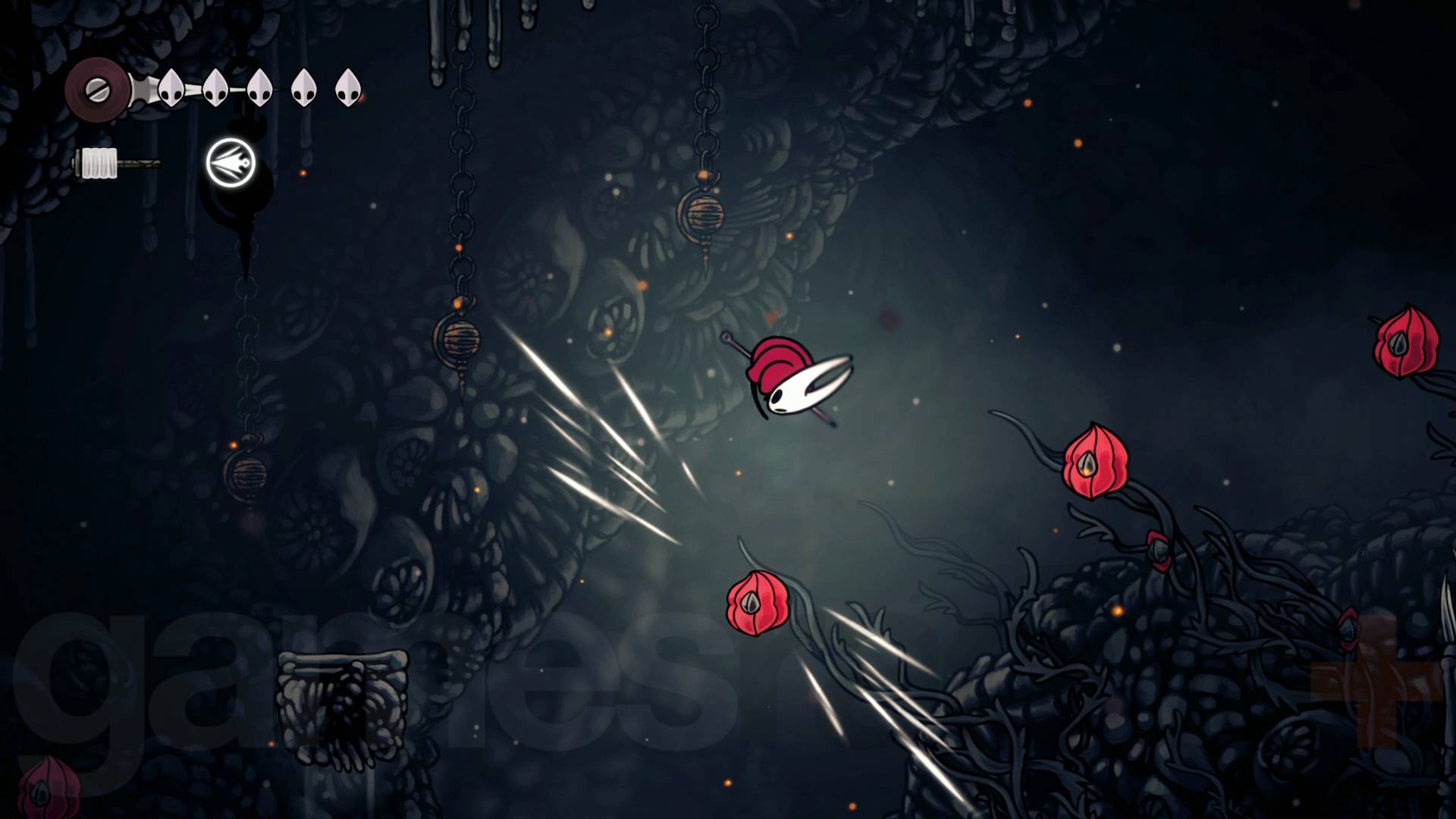
With all this being laid out I don’t think it’s unfair to say that players had a right to be a little shocked that the introduction to this game was so hard, but I’m here to tell you that very little of what I just said was actually a problem. Yes, the high damage was poorly balanced and that’s why they patched some of it, but the healing system has its own nuances, aerial attacks can be changed later in the game to be something closer to Hollow Knight‘s, and the economy is total bullshit throughout but the design gave you reason to keep going back to towns to buy new items and find new sidequests because of it. No, the real issue with Silksong is questionable design choices and seemingly half implemented mechanics that bring the game down. There’s some great stuff in here too, don’t get me wrong, and I think long term I’ll remember Silksong‘s highs much more fondly than Hollow Knight‘s, but there are undoubtedly some real problems here that can’t just be solved by saying “skill issue.”
Let’s talk about the boss design first, since that’s one of the main things everyone has been complaining about. As I’ve been playing a lot of 2D action games lately I’ve come to the conclusion that the best kinds of boss fights are the ones with telegraphed attacks, but do keep in mind that “telegraphed” doesn’t mean “easy.” It means that the boss has certain attacks that they execute and you can tell which attacks they’re doing after enough trial and error with limited RNG influencing the attack, and then you can respond accordingly. So many of the best boss fights in video games have this as a core mechanic because it gives the player a feeling of skill, adapting, and overcoming an obstacle in their path, rather than getting lucky they got a good randomization pattern on their 15th attempt at a fight. Silksong has so many bosses that inevitably it would have both the best and the worst in the medium (every Sekiro has a Demon of Hatred, after all) but Silksong‘s bad are so bad that they really tend to stick with you. We’re talking random projectiles flying all over the stage, predictable boss attack patterns thrown to the wind just because you’re at the wrong elevation when the boss decides to attack, or minor enemies swooping in at inopportune times to add more chaotic attacks to the mix, and sometimes all three at once. The word “clutter” comes to mind, as though the offending bosses weren’t presenting enough of a challenge so they just threw layers of paint on it until you could barely see the boss under all the particle effects, traps, and minions thrown in with them. Worst of all is the lack of creativity Silksong has when it just locks you in a room and throws three to eight waves of random enemies at you for no other reason than it thinks you need to work for your food and didn’t have another idea for another boss.
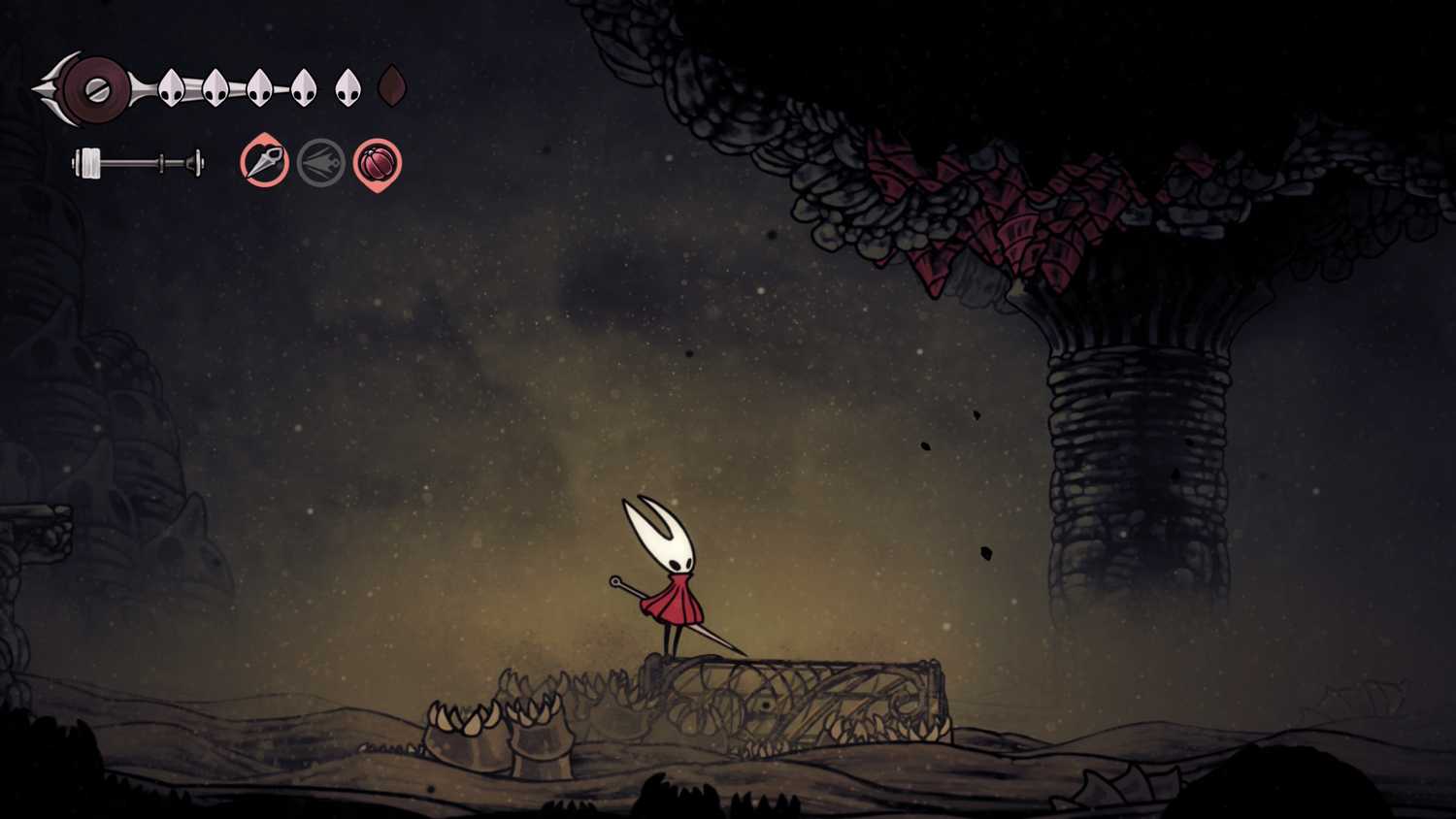
One could argue that much of this is from not playing the game as intended, and in some ways I can see that debate. Early on in the game one might stumble upon the fact that Hornet that clash/parry any weapon attack in the game with proper timing (which can lead to some fantastically organic cinematic moments) and might be encouraged to attempt to parry EVERY weapon attach in the game, but that leads to insanity very quickly. There’s also the tools she can use, a unique feature compared to all the all-magic package in Hollow Knight, that provides Hornet with a mix of traps, projectiles, and super powered melee options and you’re PROBABLY supposed to be using those more frequently against the problem bosses. The issue being of course that you won’t have a great collection for a long time (the most powerful one isn’t available until halfway through the game) and they also cost resources to produce, which leads to the Bloodborne problem of taking too many tries at a boss and then having to go farm more resources before you can do it some more. Is it a problem that certain bosses are designed to be beaten a certain way? Probably not. Are these RNG-laden, minion swarmed, overly-durable pains in the ass no fun to fight anyway regardless of what the developers may have intended? Yes.
I should emphasize before moving on that there really are some great bosses in Silksong and some decently entertaining regular enemies too, but Team Cherry has made some truly questionable choices along the way. Let’s talk about the design philosophy of Souslikes for a minute, at least a design philosophy of the Soulslikes that know what they’re doing. Every game with Soulslike mechanics has a bonfire, shrine, or other point of interest that the player uses as a checkpoint to heal, level up, and respawn enemies on the map, and in the Hollow Knight franchise it’s benches to rest on. While these all work slightly differently there is generally one universal truth: they are a safe space. There aren’t ambushes waiting around the corner, they don’t explode or turn into monsters or any other horrible trick Soulslikes try to pull on you. You are, generally, safe at a bonfire. Silksong abuses this trust not once but three times over the course of the game: setting off a huge trap to (most likely) kill you, dropping you in a poison pit, and simply not functioning after a grueling gauntlet that forces you to take on a second gauntlet to make it finally work. The worst part about these is that unlike the mimics, trapped elevators, and other cruel tricks you’ll find in other Soulslikes these trapped benches don’t have any true visual indicators that they’re going to hurt you. It just feels like unnecessarily cruel tricks that undermine any sort of “fairness” that exists in other Souslike games, especially when there’s no way for the player to know its going to happen.
In the same vein as the bench traps I was going to go on a long rant about Bilewater, Silksong‘s answer to Dark Souls‘ infamous Blighttown but somehow worse in every way that matters, however it’s an optional area only for people who want the true ending so I’ll keep it brief. Blighttown is infamous for being in a poison swamp that is nearly impossible to traverse without being poisoned yourself, and the big secret is that being poisoned doesn’t matter. The poison damage is negligible and you have enough healing items to heal through it as you wander around the swamp. Silksong has a similar swamp full of parasitic worms that blocks your ability to heal until you cure yourself (by doing a healing animation, but it doesn’t restore any health it just removes the worms) and also drains you silk energy, which reduces your window to heal. Arguably a similar trick of “it doesn’t matter” is the solution to Silksong‘s worms as well, since the boss of the area is a massive threat that can be mostly cheesed by hiding in the worm water, but the problem is this lesson doesn’t apply anywhere else. There is nothing in the other parts of Bilewater that benefits from a similar action, so it’s not something you learn through experience so much as something you stumble upon when you notice the bosses attacks can’t hit the lower corners of the screen. This could have been addressed by having some other enemies or traps that you avoid/easily beat by swimming through the worms but instead the worms are always just a hazard until you get to the boss. It’s just a strange design decision with very little thought behind it, but then again so are the exploding flying enemies in the middle of platforming sections that kill the platforms you’re supposed to bounce off of when they die. But like I said, I’m not going to do a long rant about it.
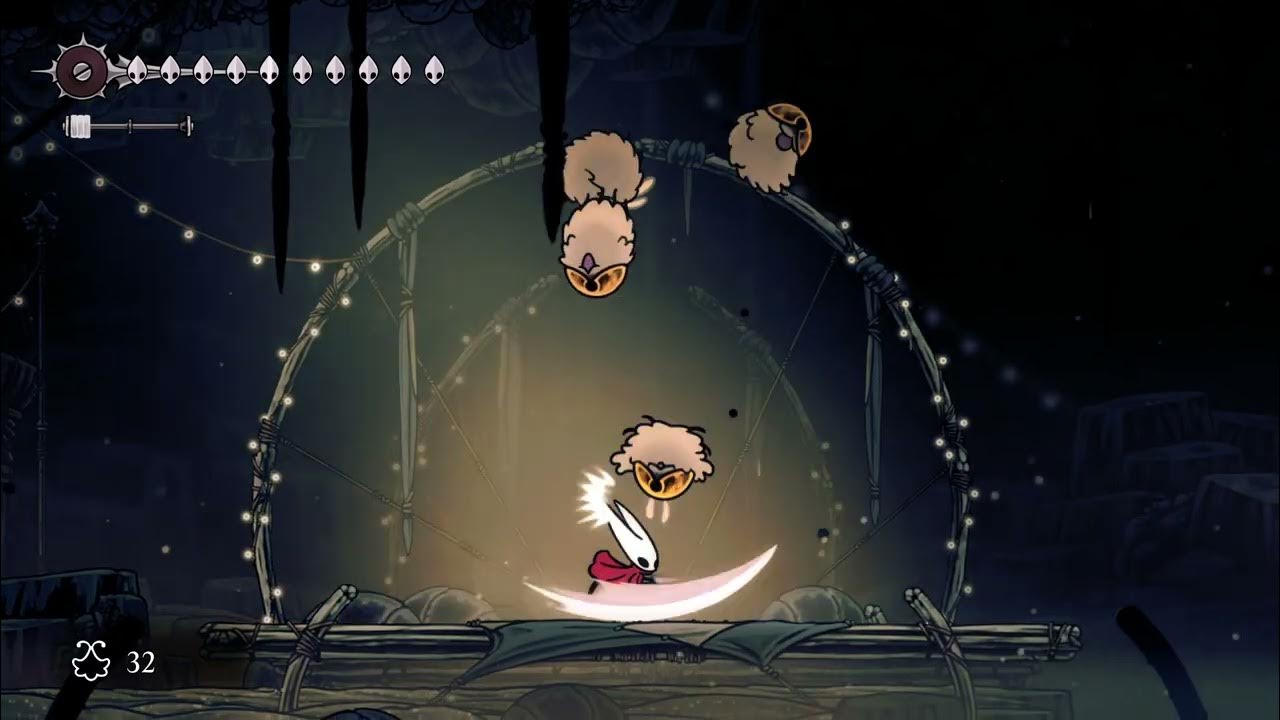
What I might go on a long rant about are the number of actually good ideas that Silksong has which seem to have been only half-baked. The only one I’ll really get into (and the most unrealized) of these is the Crests mechanic, a system where you can radically change how Hornet fights, heals, and does platforming based on which Crest you have equipped. They come in several different styles with the most notable being the Wanderer that makes you fight exactly like the original Hollow Knight or the Architect that turns Hornet’s attacks into a multi-hit drill and gives you the ability to use more tools than any other Crest. Now, you might think these Crests are going to have a variety of damage ratings based on their descriptions, using words like “heavy” and “savage” to describe your slashes, but every attack does roughly the same damage with the only difference being your attack range and speed. This quite frankly makes some Crests so bad they aren’t even worth talking about, and they feel even more incomplete when you begin getting enhancements to the starting Crest, the Hunter, but never find any other Crest upgrades for your other acquisitions. It just feels unfulfilling to have a bunch of combat options that never get upgrades compared to one that gets several, and while they may fix this in DLC it really strikes me as something they could have included for all Crests from the beginning as some sort of universal upgrade rather than playing favorites.
There’s other, more minor features as well that feel half complete. Silk Hearts are a useful upgrade for passively regenerating your healing and magic resources but after receiving one from the game’s second boss you never see them again outside of the end of the game. One could argue this is for the sake of balance and they’d probably be right, but it feels strange to have a core upgrade seemingly missing from so much of the secrets you uncover and I doubt the game balance would have suffered too much from having at least one of the Hearts show up a little earlier. Speaking of the end of the game, the final bosses in the game all have a Shinobi-esque “final blow” screen after you beat them that is strangely absent from all the other bosses. There’s really no reason for this showmanship, especially against the fourth one who is both optional and a more annoying rehash of one of the best designed bosses in the game, and makes defeating other, more interesting bosses feel lacking in comparison. Why add this so late in the game? Were they trying to build up hype now that you’re 50 hours in?
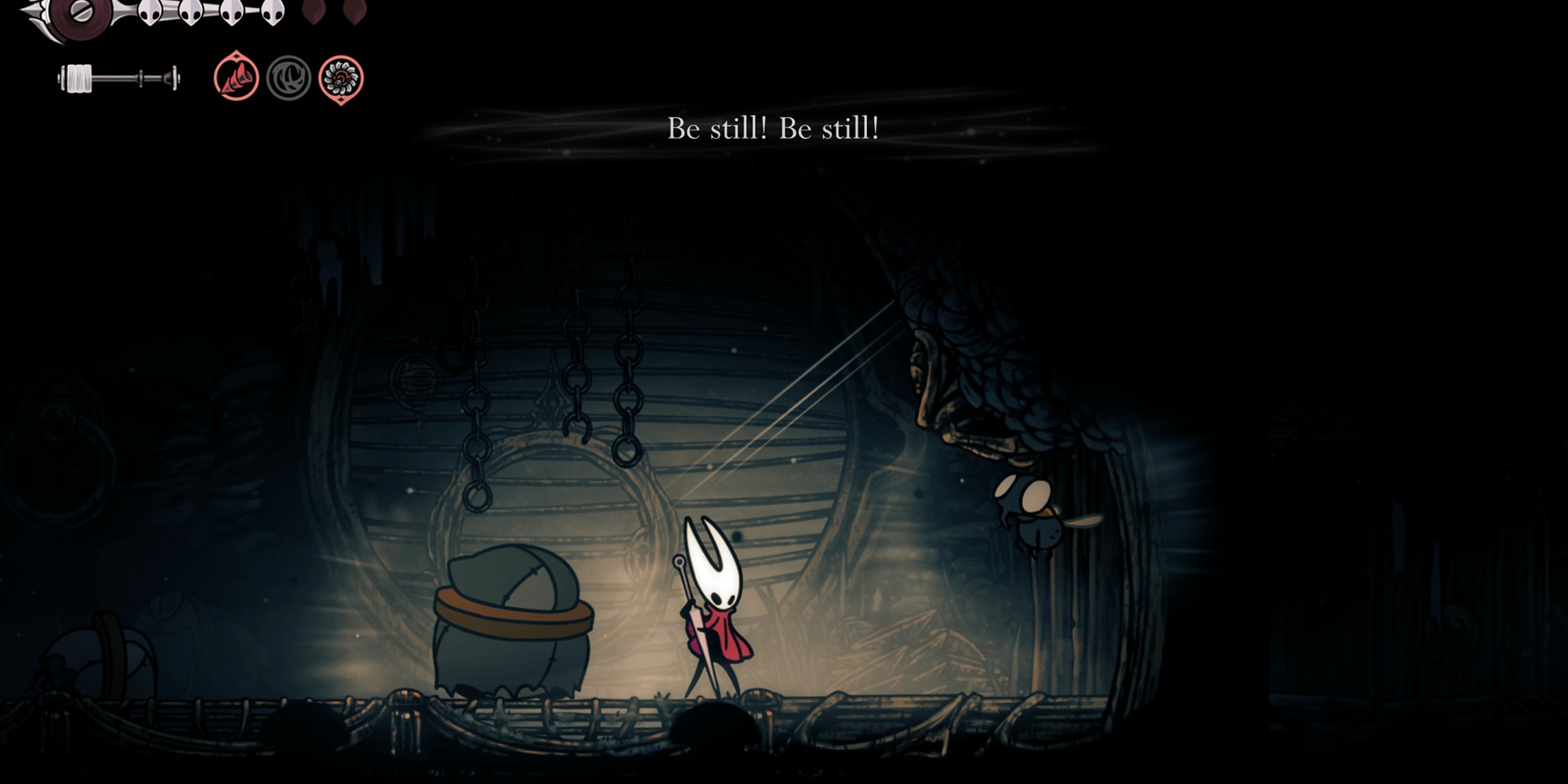
Having now gotten most of my gripes out of the way I do what to praise the game for its secrets and sense of discovery. This is the first game I’ve played since the Metal Gear Solid franchise (so it’s been a while) that is so packed with hidden mechanics that many players will never see or discover on their own. The most rudimentary of these is a taunt button that the game does nothing to advertise giving you a 50% damage increase on your next attack, but there’s also at least half a dozen secret tool combinations you can use for interesting effects both in and out of combat. Additionally the entirety of Act 3 is technically a secret as it’s only available to completionists, at least one bench has a secret if you quit the game after resting on it, and much more. I’m not generally one to gush about the thrill of discovery and retracing your steps in games but I’m always charmed when games have hidden layers of gameplay and interactions that players can discover for themselves.
Silksong is a merciless and often frustrating game that I don’t blame anyone for getting mad at when they play it. The early game damage values were all out of whack on launch, if I could remove fifteen of the “boss encounters” from the game I would, and the developers spent an awful long time making this game while not grasping some of the fundamentals that make Soulslike mechanics work at a baseline. All of that being said, much of what is in the game is arguably there for a reason and Hornet’s far superior movement tech along with her combat and defensive options would make a lot of enemies jokes if they didn’t hit you twice as hard as anything in Hollow Knight. The art, secrets, expansive content, music, and combat flow of the actually good bosses all shows some real love was put into this title, but it’s a love distilled into a vision that clashes with what a lot of people expect from a game like this. If you temper your expectations and know what you’re getting into the amount of game you get for your money is worth the price of admission, just know that some portion of your sanity is part of the payment once you get in there.
